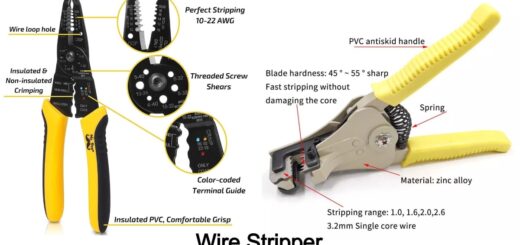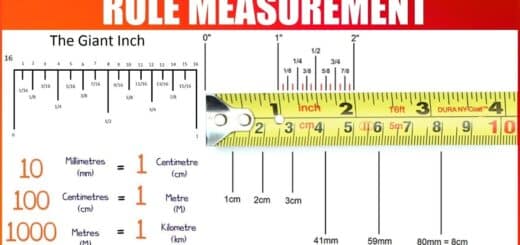Types of File Tool and Their Uses [with Pictures]
![Types of File Tool and Their Uses [with Pictures]](https://engineeringlearn.com/wp-content/uploads/2021/06/File-1024x539.jpg)
Types of File Tool and Their Uses [with Pictures] :- A file is referred to as a mechanical tool which is used to remove the finer amount of substance from a work piece. This types of tools are mostly commonly used in jobs like woodworking, metalworking, and other similar trade.
Different Types of File Tools
A) Classification According To The Shape
The file tools are classified according to various types. One amongst this is the classification according to the shapes:
1. Flat File: ( Types of File Tool )
A flat file is referred to as a file which is of a rectangular cross-section in shape. This instrument is designed in a slightly different way by tapering both the width and thickness of the file. Double cut teeth are cut on the face whereas the simple-cut teeth are cut on the edges. These instruments are the one which are used to reduce the flat surfaces by filing and finishing the work piece.
2. Round File: ( Types of File Tool )
As the name clearly tells, these are the types of file which is found having a round section. This type of files are used for the purpose of rubbing or finishing the keyholes of a small diameter.
3. Half-Round File: ( Types of File Tool )
Half round files are the files which is found on the side and is curved on the other side. On the other hand the double cut dents are cut on it like a round file which is then tapered. These types of mechanical instruments are mainly used to repair the damaged hole and to also set them in order again.
4. Triangular File: ( Types of File Tool )
The name clearly depicts the shape of such types of files. The files slots are found having angles of 60 degrees. In order to complete filing of V slots job, the square and rectangular jobs ranging from 60°-90° angle are mostly done using this file. This type of file is also known as three square files.
5. Square File: ( Types of File Tool )
These types of files are in the shape of a square and are found being tapered. The slots of filing in a rectangular, square groove and key-way is done using these types of file.
6. Hand File: ( Types of File Tool )
A hand file is quite similar to the flat file which is mostly used for filing the internal right angle side of a job. These types of hand files are also known as the safe edge file.
7. Knife-Edge File: ( Types of File Tool )
Knife edge files are used at places where there is a requirement of a sharp file. The shape of this type of mechanical instrument is like the edge of a knife. The thin edge is usually at an angle of 10°. These are also used for filing the small grooves and slots which are found having an angle less than 60°. Knife-edge files are generally used in the lock industry for making the keys.
B) Classification According To Grade
The files are also classified according to the type of grade. Here are some of the most common types of files which are segregated according to the grade. Scroll down to know more about these types of files:
1. Rough File: ( Types of File Tool )
These are the files which are found having teeth of the bigger size and less in number. The round files are found having their application in cutting the soft materials as its cutting is quite rough due to which, it cannot be used for the hard metals.
2. Second Cut File: ( Types of File Tool )
A second cut file is referred to as a file which is found having the medium grade. For the purpose of filling, this type of file is most commonly used in order to bring the job in a proper size. Comparing these types of files with the bastard file, filing is found to be done with this file in order to make the surface plain.
3. Smooth File: ( Types of File Tool )
Smooth file is used at endless sites where the ultimate target is to get a smooth surface. This types of files are used to make the surface quite plain and other than this it is additionally used for making a job of accurate size by filing.
4. Dead Smooth File: ( Types of File Tool )
The dead smooth file is designed in such a way in which its teeth are found to be very close to each other and rubs off the metal in very little quantity. These mechanical instruments are used for bringing the shine on the job once the finishing has been done successfully.
C) Classification of Files On The Basis of Cut
The files are also classified according to the basis of cut. Here are some of the most common types of files which are segregated according to the type of cut. Scroll down to know more about these types of files:
1. Single Cut File: ( Types of File Tool )
A single cut file is referred to as that mechanical tool which is found having parallel lines of teeth that run diagonally across its face and that too in one direction only. The metal surface is rubbed nicely in the little quantity and therefore the surface becomes smooth. Therefore, these are the devices which are used for the hard metals as well as for finishing.
2. Double-Cut File: ( Types of File Tool )
Double cut file is referred to as that file which has two rows of teeth crossing each other at a particular angle of 40°- 45° degrees and the other row having an angle of 70°- 80°. This is set in such a way due to the double teeth. This file is responsible for cutting the metal quickly but on the other side it cannot make the surface that smooth. These types of files are also referred to as a coarse type file having an angle of 30° to 35° in one row and 80° to 87° angle in the other row.
3. Curved Cut File: ( Types of File Tool )
A curved cut file is also known as Vixen file which is mostly used for filing of the wide surfaces of soft metal like aluminium, zinc, copper and brass.
4. Spiral Cut File: ( Types of File Tool )
This types of files has teeth, which are cut in round or semi-round files. The shape of the teeth in a spiral cut file is like that of threads.
5. Rasp Cut File: ( Types of File Tool )
Rasp cut file is a type of file which has special thick teeth. These are the teeth which are of triangular shape and also are found to be in a bulging state. These are the files which are used for working in woods, plastic, fiber, hard rubber and horns and hoofs of animals.
D) Other Types of Files Tool
Other than all the types of files which have been described above. There are various other most common types of files about which things are explained in detail. Scroll down to know more about these types of files:
1. Barrette Files: ( Types of Files Tool )
Barrette files are referred to as the files which are tapered both in width as well as in thickness, which comes to a rounded point at the end. In this type of files there is only the flat side which is cut, whereas the other sides are all kept safe in order to execute the flat work.
2. Checkering Files: ( Types of Files Tool )
Checkering files are referred to as those files which are parallel in width and are gently tapered in terms of thickness. These mechanical instruments are found having teeth cut in a precise grid pattern which are used for making the serrations as well as for doing the checkering work.
3. Crochet Files: ( Types of Files Tool )
Crochet files are the ones which are tapered in width and are gradually tapered in thickness as well, with two flats as well ad radius edges, cut all around. These types of mechanical devices are mostly used in filing junctions either within a flat or curved surface and slots with the rounded edges.
4. Crossing Files: ( Types of Files Tool )
Crossing files are the files which are half round on both the sides accompanied with one side having a larger radius as compared to the other as well as tapered in width and thickness in order to fill the interior curved surfaces. The double radius is responsible for making the filing process possible at the junction of two curved surfaces or a straight and curved surface.
5. Dreadnought and Millenicut Files: ( Types of Files Tools)
Dreadnought also referred to as curved teeth and millenicut also referred to as straight teeth are the files which are found to be heavily undercut, sharp but coarse teeth. Both of these files are used for rapidly removing the large quantities of material from thick aluminum alloy, copper or brass. The millenicut and dreadnought are the latest instruments in removing the plastic filler materials like two-part epoxies or styrenes like the ones which are commonly used in automobile body repairs.
6. Equalling Files: ( Types of Files Tool )
Equalling files are the ones which are quite parallel in terms of width and thickness. These are the mechanical devices which are mostly used for filing the slots and corners.
7. Farrier Rasp: ( Types of Files Tool )
Farrier rasp are referred to as the files which are tanged rasps and is mainly used by the farriers and blacksmiths. They are used as they are flat with a rasp on one side and double cut on the reverse.
8. Fret Files: ( Types of Files Tool )
Fret files can be defined as the square or rectangular files which are found having three flat sides and one side having a concave groove. These types of mechanical instruments are mostly used by the luthiers in order to file a rounded crown on the frets of guitars and other instruments. The flat faces of such type of files are used in order to dress the ends of the frets, by removing the sharp edges that is left once the frets are trimmed to the required length.
9. Half Round Ring Files: ( Types of Files Tool )
Half round ring files are referred to as those files which are tapered in terms of width and thickness and are quite narrow as compared to any standard half round. These are the type of files which are used for filing the inside portion of rings.
10. Joint Round Edge Files: ( Types of Files Tool )
Joint round edge files are those which are parallel in width and thickness accompanied with rounded edges. The flats are safe which are found having no teeth and cut on the rounded edges only. These types of mechanical tools are used for making joints and hinges.
11. Knife Files: ( Types of Files Tool )
Knife file is referred to as those which is tapered in width and thickness whereas the knife edge has the same thickness and the whole length is similar to having an arc to it. These types of files are used for slotting or wedging operations.
12. Nut Files: ( Types of Files Tools )
Nut files are those mechanical devices which are quite fine and precise files in sets of graduated thickness and is mostly used by the luthiers for dressing the slots at the end of the neck which supports the strings of guitars, violins etc., in the correct position.
13. Pillar Files: ( Types of Files Tools )
Pillar files are the ones which are parallel in width and is tapered in thickness for the execution of accurate flat filing job. Double cut top and bottom with both sides safe, long and are perfect for precise work.
14. Pippin Files: ( Types of Files Tools )
Pippin files are referred to as the ones which are tapered in width and thickness, and is generally of a teardrop cross section which has the edge of a knife file. These types of instruments which are used for filing the junction of two curved surfaces and making V-shaped slots.
15. Planemaker’s Float Files: ( Types of Files Tools )
Planemaker’s floats are simply straight and single-cut files which are found to be tapered. These instruments are used for cutting, flattening and smoothing wood particularly in making wooden hand planes.
16. Round Parallel Files: ( Types of Files Tools )
Round parallel files are quite similar to the round files which are except that they do not taper. These are the files which are shaped like a toothed cylinder.
17. Saw Sharpening Files: ( Types of Files Tools )
Saw sharpening files are the ones which are usually single cut in order to deliver a smooth finish. The saw sharpening files are found to be well-suited in order to sharpen the saw blades.
For instance, chainsaw file is used primarily for sharpening the chainsaws. These are appeared to have a round cross-section, but are actually shaped to fit against the cutting edge of a chainsaw’s teeth.













